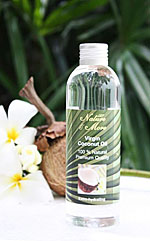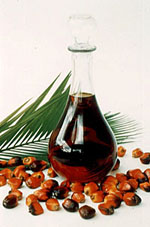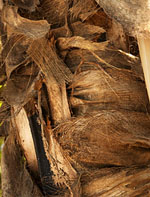Copra
Copra: The Life-Blood of the South Pacific
[ad] Empty ad slot (#1)!
The name copra was first used in the Malaysian culture and it refers to the fruit of the coconut palm. The actually word is derived from word, khopra, which in Hindi for coconut. It refers to the part of the coconut that is the source of all coconut oil.
Copra is the name for the dried meaty lining of the coconut, from which coconut oil is extracted. The end of the coconut is “husked” by smashing the end down on a sharp, single point. This splits the shell which is then cracked into two halves with a knife. The meaty lining, now exposed, is roughly 50 percent water and 40 percent oil. This meat is dried thoroughly, either by kiln or sun exposure. It is then cleaned and crushed. A solvent is then used to separate the oil from the copra.
 The thick residue that remains once coconut oil is separated from the copra is referred to as coconut oil cake. This cake is commonly used as livestock feed. Copra is an extremely high source of quality protein for livestock such as sheep and cattle. Copra is used in a variety of foods as well, such as sweets and baked goods. It can also be eaten raw as a high-energy snack food.
The thick residue that remains once coconut oil is separated from the copra is referred to as coconut oil cake. This cake is commonly used as livestock feed. Copra is an extremely high source of quality protein for livestock such as sheep and cattle. Copra is used in a variety of foods as well, such as sweets and baked goods. It can also be eaten raw as a high-energy snack food.
Copra is the chief export of many pacific islands. In 1998, 870,864 metric tons of copra was imported world-wide, the majority of which are produced in the Philippines. However, it is also an essential export in Papua New Guinea, Vanuatu, Mozambique, Malaysia, and the Pacific Islands. These developing nations depend on the coconut and it’s by-products, even more so as the market for coconut products grows throughout the world.

 Coconut Oil
Coconut Oil Coconut Juice
Coconut Juice Coconut Sugar
Coconut Sugar Palm Kernel Oil
Palm Kernel Oil Copra
Copra